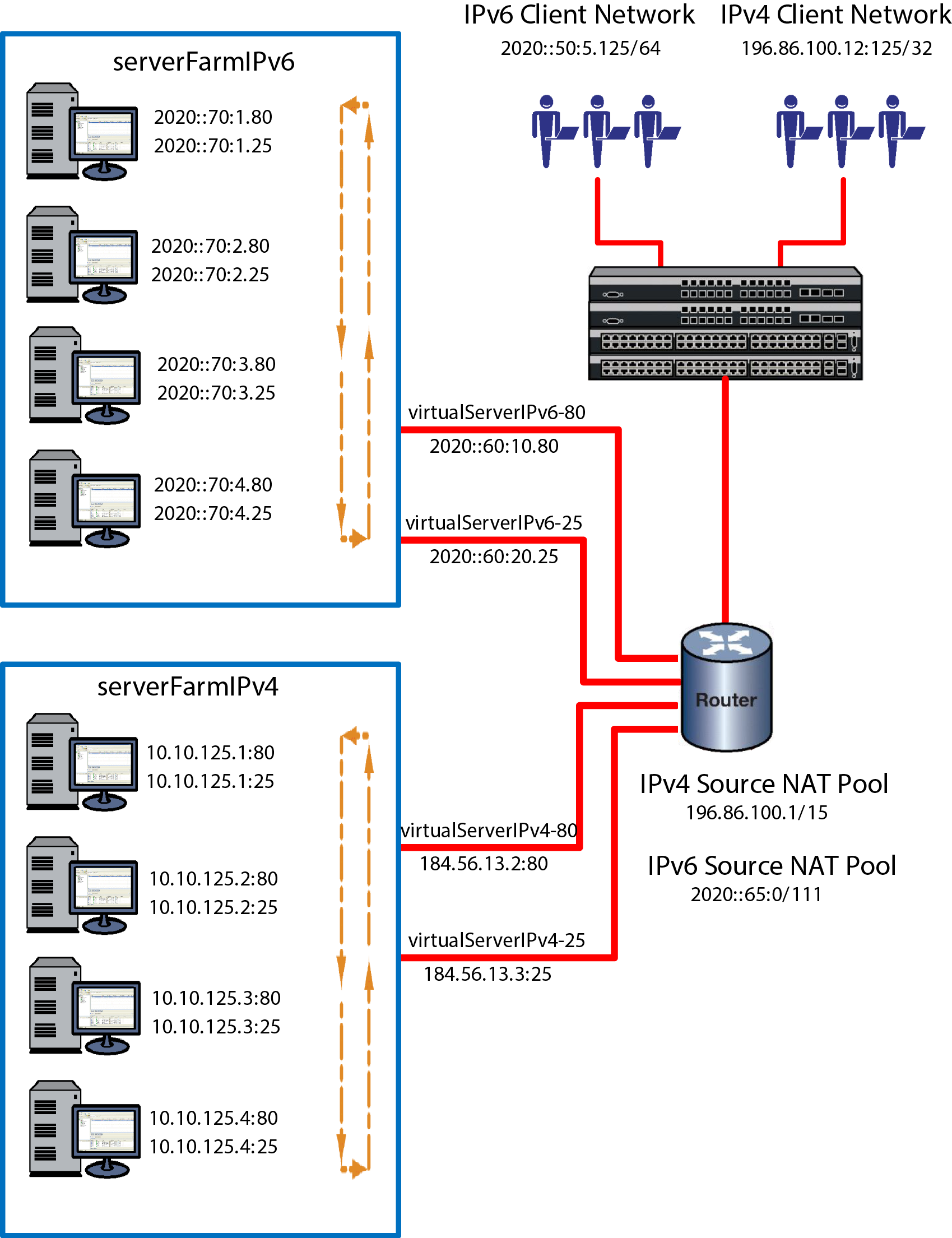This section provides an LSNAT configuration example that includes both an IPv4 and IPv6 server farm. The real servers belonging to each server farm will service both HTTP and SMTP requests from clients configured with the same IP address type as the server farm.
Two virtual servers are configured for each server farm:
An IPv4 source NAT pool provides natted source addresses for packets forwarded to the IPv4 server farm. An IPv6 source NAT pool provides natted source addresses for the packets forwarded to the IPv6 server farm.
The real servers configured on the IPv6 server farm, named serverFarmIPv6, will handle all HTTP and SMTP requests from clients on network 2020::50:5/64. HTTP requests will use virtual server virtualServerIPv6-80 configured with IP address of 2020::60:10.80. SMTP requests will use virtual server virtualServerIPv6-25 configured with IP 2020::60:20.25. All requests will be source natted using the IPv6 source NAT pool 2020::65:0/111.
The real servers configured on the IPv4 server farm, named serverFarmIPv4, will handle all HTTP and SMTP requests from clients on network 196.86.100.12/32. HTTP requests will use virtual server virtualServerIPv4-80 configured with IP address of 184.56.13.2:80. SMTP requests will use virtual server virtualServerIPv4-25 configured with IP 184.56.13.3:25. All requests will be source natted using the IPv4 source NAT pool 196.86.100.1/15.
Each real server, for both server farms will:
Real servers will be configured for the round robin predictor. Real servers in the IPv4 server farm will use weighted round robin with a ratio of 2:3:2:3. This weighted round robin selection process takes into account the resource differences between the four servers in the IPv4 server farm.
See LSNAT Configuration Example for a graphic presentation of this LSNAT configuration example.


 Print
this page
Print
this page Email this topic
Email this topic Feedback
Feedback